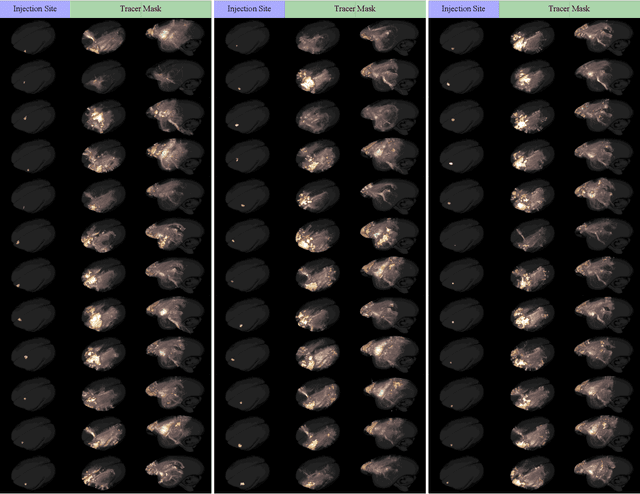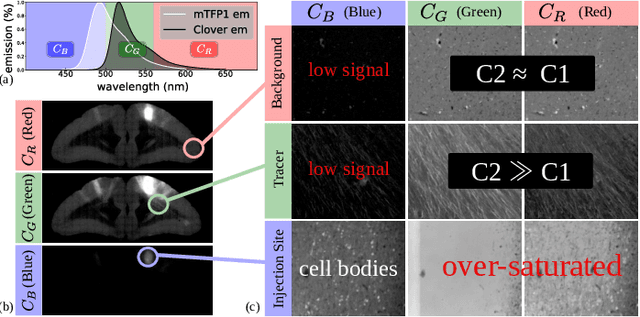Alexander Woodward
MarmoNet: a pipeline for automated projection mapping of the common marmoset brain from whole-brain serial two-photon tomography
Aug 02, 2019



Abstract:Understanding the connectivity in the brain is an important prerequisite for understanding how the brain processes information. In the Brain/MINDS project, a connectivity study on marmoset brains uses two-photon microscopy fluorescence images of axonal projections to collect the neuron connectivity from defined brain regions at the mesoscopic scale. The processing of the images requires the detection and segmentation of the axonal tracer signal. The objective is to detect as much tracer signal as possible while not misclassifying other background structures as the signal. This can be challenging because of imaging noise, a cluttered image background, distortions or varying image contrast cause problems. We are developing MarmoNet, a pipeline that processes and analyzes tracer image data of the common marmoset brain. The pipeline incorporates state-of-the-art machine learning techniques based on artificial convolutional neural networks (CNN) and image registration techniques to extract and map all relevant information in a robust manner. The pipeline processes new images in a fully automated way. This report introduces the current state of the tracer signal analysis part of the pipeline.
Neural coordination can be enhanced by occasional interruption of normal firing patterns: A self-optimizing spiking neural network model
Sep 01, 2014



Abstract:The state space of a conventional Hopfield network typically exhibits many different attractors of which only a small subset satisfy constraints between neurons in a globally optimal fashion. It has recently been demonstrated that combining Hebbian learning with occasional alterations of normal neural states avoids this problem by means of self-organized enlargement of the best basins of attraction. However, so far it is not clear to what extent this process of self-optimization is also operative in real brains. Here we demonstrate that it can be transferred to more biologically plausible neural networks by implementing a self-optimizing spiking neural network model. In addition, by using this spiking neural network to emulate a Hopfield network with Hebbian learning, we attempt to make a connection between rate-based and temporal coding based neural systems. Although further work is required to make this model more realistic, it already suggests that the efficacy of the self-optimizing process is independent from the simplifying assumptions of a conventional Hopfield network. We also discuss natural and cultural processes that could be responsible for occasional alteration of neural firing patterns in actual brains
 Add to Chrome
Add to Chrome Add to Firefox
Add to Firefox Add to Edge
Add to Edge